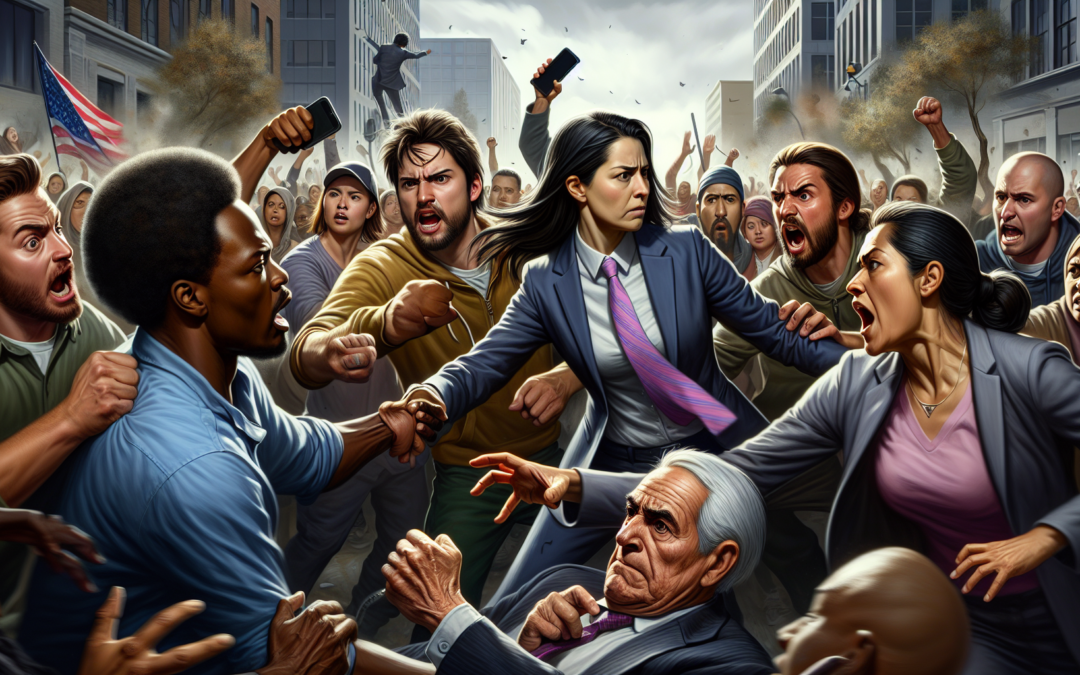The Challenge of Policing in Polarized Times
As citizens capture and broadcast every stumble of those donning the badge, the daunting realities facing our nation’s law enforcement become all too clear. In the forefront of every call’s anticipation—a sweeping array of unknowns that can arise at any moment—officers are thrust into an unforgiving spotlight. A recent confrontation heightened this tension, illustrating both the humanity and heroism inherent in police work and the pressing need for societal understanding.
Take a glimpse at the narrative: an auditor, assertive and unwilling to budge despite swelling opposition, weaponizes transparency to fuel discord. This painted a vivid picture of modern disputes, morphing into omnipresent media sensations. Amidst it all, standing resolute are law enforcement officers—marshals of justice forced into the eye of countless conflicts, any of which might escalate past the tipping point.
An Officer’s Quandary
The mandate to maintain order is enshrined as a noble duty, yet fraught with complexities that civilian observers scarcely fathom. Officers aren’t merely expected to enforce the law—they’re charged with striking a delicate symphony between authority and empathy. Any officer responding to an uncomfortable situation involving an unruly auditor must balance perspective: protect the civil liberties of one as fervently as defending the peace for all others involved.
In this moment of tension, recorded and shared without restraint, an officer becomes a lightning rod. They face impassioned crowds, microphones aggressively thrust towards them, capturing every quiver in their voice and asserting accountability. Fundamental questions emerge: How can law enforcement uphold respect even when respect is not reciprocated? Where is the line between ensuring safety and violating civil discourse?
A Reality of Erosion
For everyday citizens, the visuals are raw and discomforting: the retrieval of a personal device seized from a defiant individual enveloped by mounting dissent. Amidst this human drama, the officers’ reality reflects strikingly blurred boundaries between right and wrong, safety and liberty, order and chaos. As illustrated vividly in The John Ligato Show, these complicated scenarios serve educational purpose for a populace often detached from the frontline experience.
In detailing these scenes, John Ligato offers more than a critique from behind the screen: he invites reflection on the crumbling trust between society and those who swore to protect it. Officers engaged in such turmoil are left contending not just with dissent but the gradual erosion of belief in their mission—a force equally concerning in shaping public safety and the wellbeing of communities nationwide.
The Emotional Landscape
Imagine the furrowed brows of officers, who’ve shed titles to listen compassionately. The tales uncovered on this Facebook presence chart a living pulse through police testimony, portraying internal battles with empathy defying convention. Regardless of the badge’s authority, beneath it lies vulnerability—a plea for understanding and support from the community to do that which must be done.
In times of practiced de-escalation, seeing compassion works as a catalyst through turbulent energies; police officers transcend their normal limits, presenting empathy rather than enmity. It remains imperative that the experience of those bearing law enforcement responsibilities demands introspection by cheerleaders of civic expression. Without coupling transparency with tact and respectful exchange, we stumble towards conflict—whereby civic discourse turns less of an opportunity for growth and more of a trial of dissolution.
Towards Consensus
The remedy only exists beyond isolated incrementalism. Law enforcement’s promise rests upon dialogue—conceptualizing policies drawn inclusively amidst genuine participation from those involved. Restoring trust with the public hangs ideally from communal commitment unconstrained by past traditions nor fragmentation, endorsing policies wielded within rights, freedom, and order combined.
The events witnessed and contextualized in John Ligato’s account transpire endemic realities; however, within them echoes a welcome call to catalyze broader acceptances beyond impromptu critiques or inclinations to delegitimize. Progress authentically unfolds outside media glare in shared ownership of society, affirming values met by all stakeholders committed uncompromisingly to enduring peace through tough wisdom and steadfast trust.
In Conclusion: to light the torch—yet well mired in today’s turbulent ambiance—law enforcement stands enjoined with citizen synergy rather than isolated assertions. Illuminating paths toward resolution opens possibilities as distant echoes of grievance meld eventually into melodies harmonious across community hearts beating and abiding inexorably under one flag bound not by strife, but symphonic embrace, no longer dissonant amidst justice attained.

Recent Comments